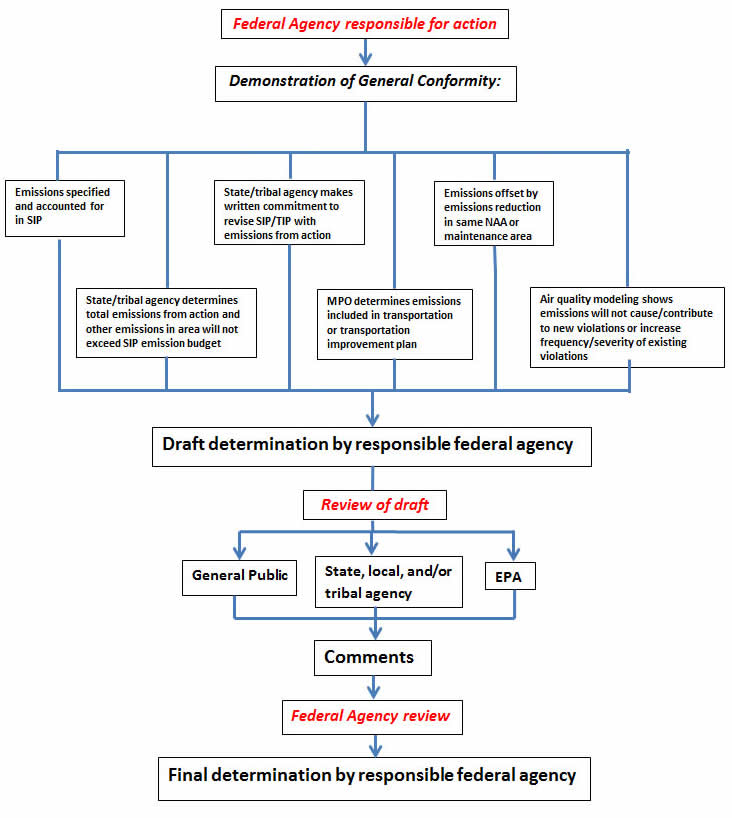General Conformity Training Module 1.2: Who and How
Words that are shown in bold and italics are defined in the Glossary.
1.2.1 Who makes the General Conformity Determination?
Federal agencies ensure conformity requirements are met before funding or approving federal projects. Each federal agency makes its own conformity determination in an open process. This process includes the opportunity to review the draft determination by the appropriate EPA, state, local, and/or tribal air quality agency, as well as the general public. The federal agency must consider any comments it receives before making a final determination. EPA has a consultation role in the conformity process and, in many cases, will review the conformity determinations and provide comment letters to Federal agencies. Of course, EPA is also responsible for issuing the conformity regulations and associated guidance documents. EPA regulations allow states to adopt their own conformity regulations. When a state adopts such regulations and EPA approves them in the State Implementation Plan (SIP), the federal agency must comply with those state regulations until those regulations are revised and approved by EPA through a SIP revision.
1.2.2 How is General Conformity determined?
The general conformity program is an emission-based system, meaning the program requires emissions to be evaluated and addressed where applicable. The General Conformity Regulations identify several ways to demonstrate conformity. As described in the regulations, conformity can be demonstrated if:
- The emissions are specifically identified and accounted for in the SIP;
- The state or tribal agency responsible for the SIP/TIP determines that the total emissions from the action, along with all other emissions in the area, will not exceed the SIP emission budget;
- The state or tribe makes a written commitment to revise the SIP/TIP to include the emissions from the action;
- The Metropolitan Planning Organization for the area determines that the emissions are included in the transportation plan or transportation improvement plan;
- The emissions are fully offset by the reduction of emissions in the same nonattainment or maintenance area, or nearby area of equal or higher classification if the emissions impact the nonattainment or maintenance area; or
- Air quality modeling demonstrates that the emissions will not cause or contribute to new violations of the standards or increase the frequency or severity of any existing violations of the standards.
Figure 2. Who and How

